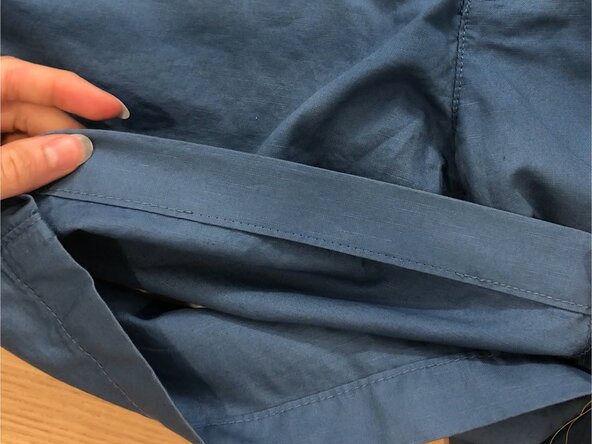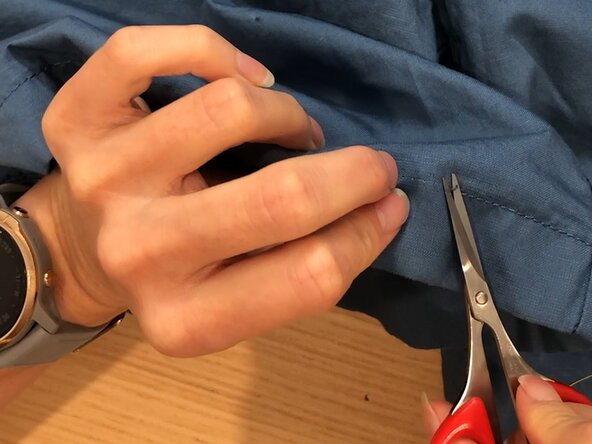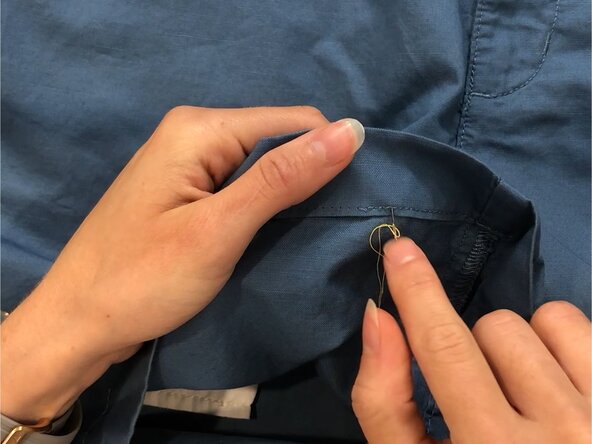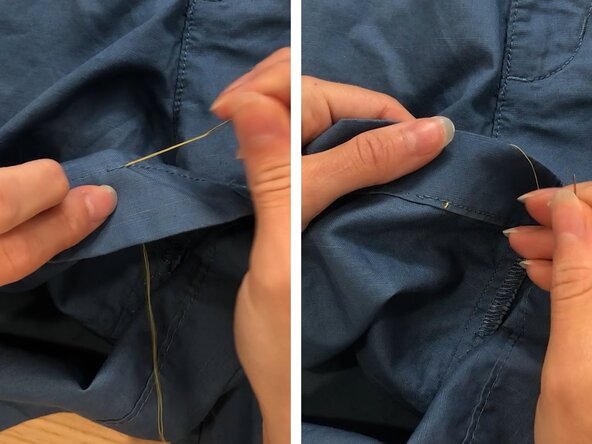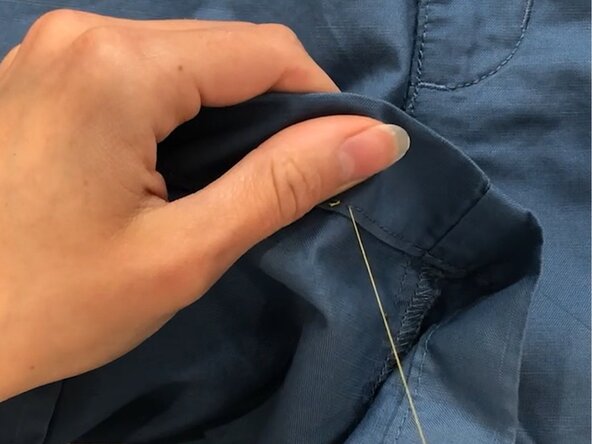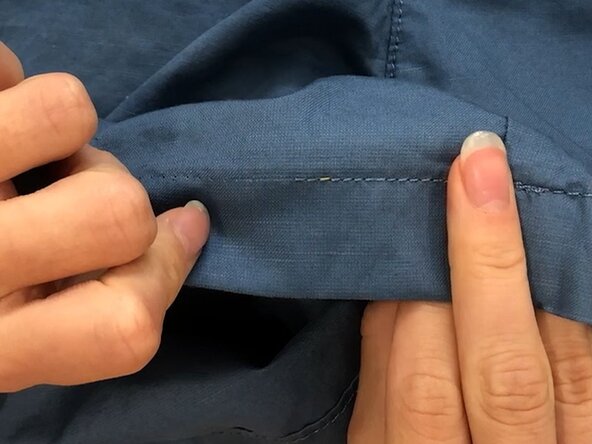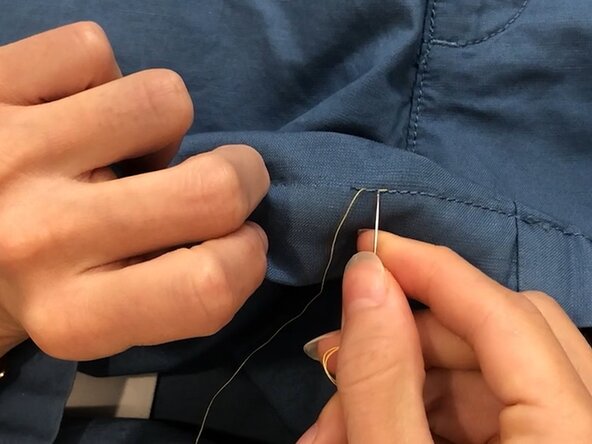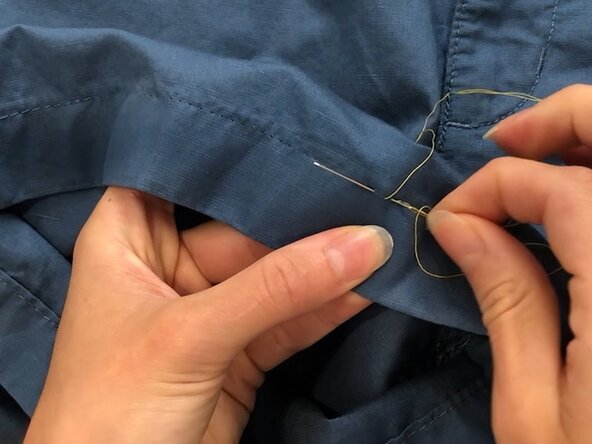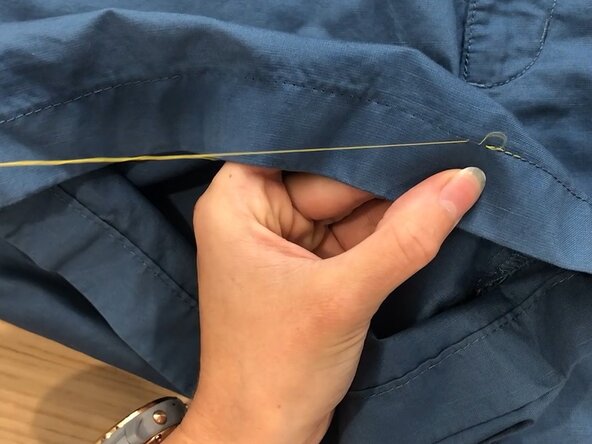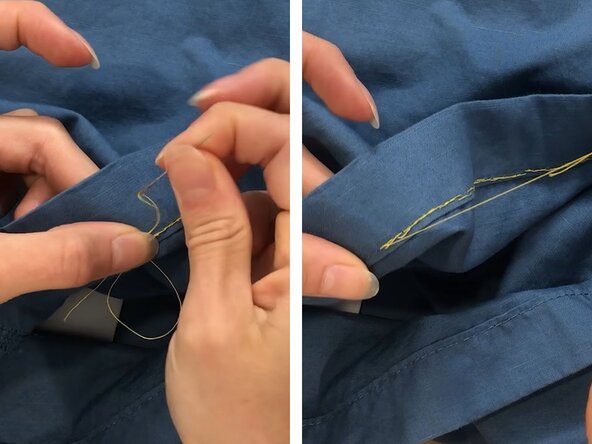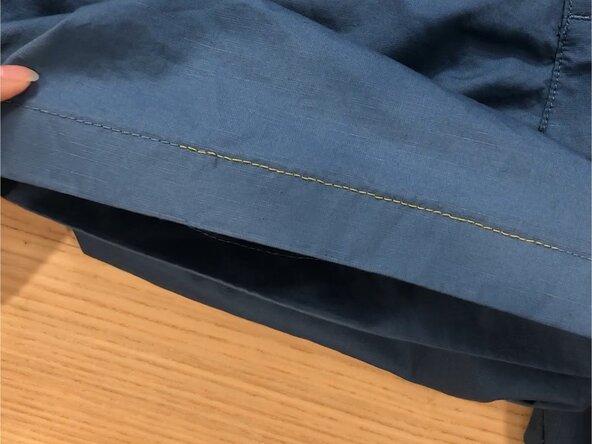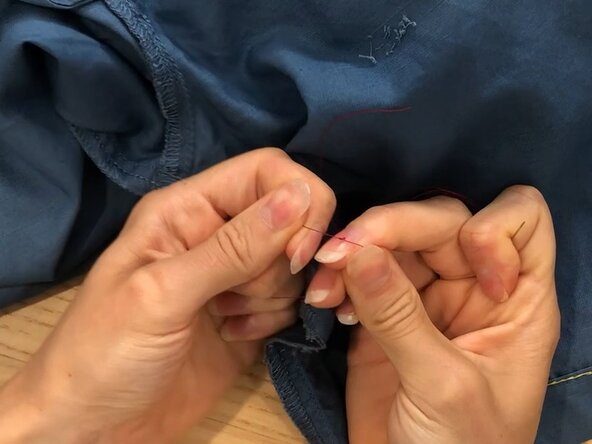Backstitch on a Loose Hem
ID: 185388
Description: Repair homepage....
Steps:
- The backstitch is one of the strongest hand sewing stitches.
- Structure - This technique forms a solid line of stitches on the fabric surface while creating a double-length stitch on the backside.
- Repair Use - Commonly used in hand sewn repairs as a substitute for machine stitching. Its looping structure provides strength, stability, and slight elasticity when pulled.
- Locate the area with missing stitching and trim away any loose or hanging threads.
- Mark the new stitch line with chalk or a heat-erasable pen.
- If stitch holes from the previous stitching are visible, these can be used as a guide for the new stitch line.
- If the opening is larger than a few inches, use pins or binder clips to secure the pieces of fabric together while sewing.
- Thread the needle with a length of thread approximately 24 inches (~61 cm) long and tie a knot at one end of the thread. For more details see Needles and Thread.
- The pictured repair uses contrast thread for visibility, but matching thread will make this repair almost invisible.
- From the backside of the seam, pierce the needle through to the front, overlapping any existing stitching by at least 1/2 inch (~13 mm).
- If the seam doesn't have a front and backside, choose either.
- Pull the thread through until the knot lies flush against the fabric.
- From the front side, pierce the seam one stitch length behind the point where the thread emerges, moving in the opposite direction of the stitching path.
- Pull needle and thread through to the backside.
- From the backside, pierce the seam two stitch lengths forward, moving in the direction of the stitching path.
- Pull the needle and thread through to the front side.
- Repeat steps 4 and 5 to create a continuous backstitch along the marked seam line.
- To backstitch without repeatedly flipping the fabric, insert the needle into the seam one stitch length behind the current position and guide it to exit one stitch length forward.
- The working thread should lie in the middle of the needle's entry and exit points.
- Pull the thread through to secure the stitch.
- This method is quicker but more prone to tangling on the backside. Periodically check that the thread is pulling through smoothly.
- Continue until the original stitch has been overlapped by at least 1/2 inch (13 mm) and finish with the needle on the backside.
- Without pulling the needle all the way through, begin making a small stitch on the backside of the fabric.
- Wrap the working thread around the needle point three times.
- Pull the needle through the fabric and loops of thread. The wrapped thread will create a knot that lies flush with the fabric.
- For a more detailed explanation see Knot Thread to the Fabric (2 Ways).
- Ensure the knot is secure, then snip away excess thread.
- Ensure the stitch securely closes the seam and can withstand tension.
- Add additional lines of stitching if necessary.
- TANGLED THREAD: To address tangles or knots in the thread:
- Start by using the tip of the needle to work the knot loose.
- If this fails, gently tug on either end of the thread to pull out the knot.
- If this method is also unsuccessful, cut the thread and start a new stitch, overlapping previous stitches by at least 1/2 inch (~13 mm).
- Ensure any knot is cut out completely.



